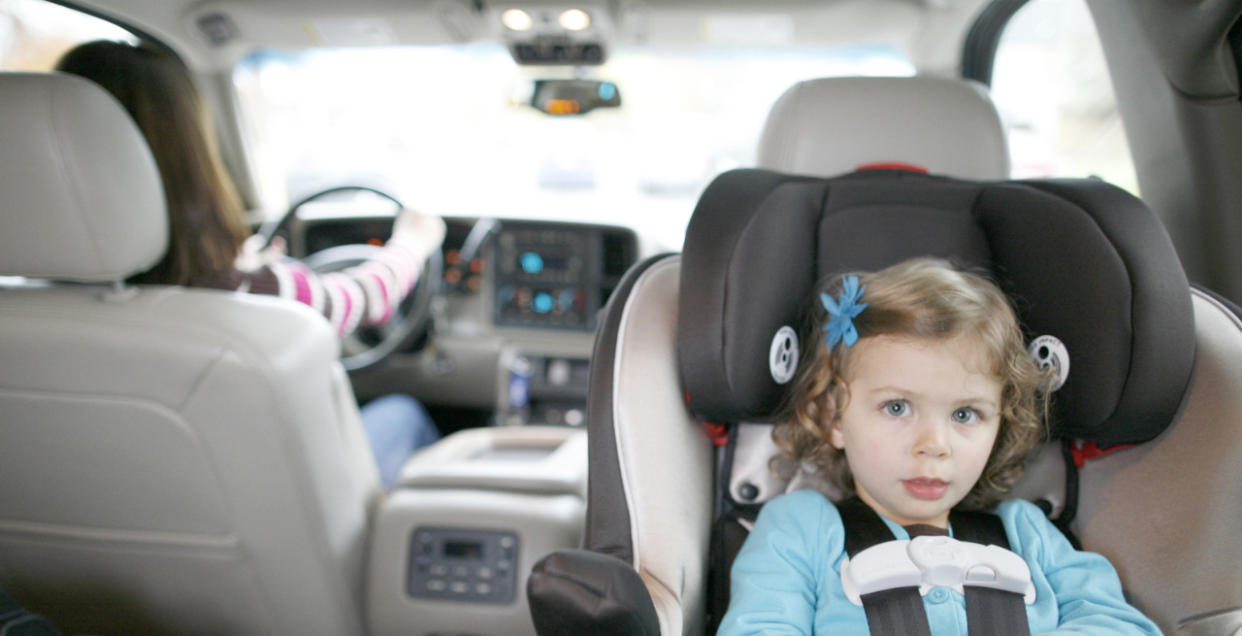Why Many Cars May Not Be Safe for Car Seats

You’re not alone if you’ve wondered whether you picked the right car seat for your car or if you put it in correctly. Even though car seats come with instructions, it’s easy feel unsure, confused and — let’s be honest, frustrated — when it comes to installing them.
As it turns out, there’s a good chance your child’s car seat isn’t the best fit for your car or hasn’t been installed the right way.
STORY: How Walmart’s New Car Seat Will Save Babies’ Lives
A new study published in the journal Traffic Injury Prevention found that children’s car seats often don’t properly fit the actual seat, which can have serious consequences when it comes to safety.
In the study, the researchers gathered the dimensions of 61 cars, as well as 59 child car seats, and compared them to see which configurations were the least compatible. The researchers then analyzed 3,600 different combinations of car seats and cars, along with examining 34 actual car seat installations, and found that less than 60 percent of rear-facing infant car seat-vehicle combinations were safely and properly installed. They tested popular car seat brands, including Graco, Safety 1st, Britax, Chicco, and Evenflo, along with cars such as the Honda Accord, Toyota Camry, Audi A4, Acura RDX, and the Ford Fusion SE.
STORY: How a Facebook Photo Could Have Saved a Child’s Life
The researchers also found that some parents wedge towels or pool noodles to make up for gaps between the car seat and the vehicle’s seat, which can comprise forward-facing car seats’ effectiveness at protecting your child during a car accident.
“What the study highlights is incompatibility between vehicles and car seats, which is something that often isn’t spoken about,” Alisa Baer, MD, co-founder of The Car Seat Lady and an expert in car seat safety, tells Yahoo Parenting.
STORY: Caught on Tape: Dramatic Moment 5 Women Break Into Car to Rescue 2-Year-Old
There are several factors that cause car seats to be positioned improperly, including headrests. “Forward-facing car seats or high-back booster seats should be flush against the back of the vehicle’s seat,” says Baer, who notes this isn’t an issue for rear-facing car seats. “If the vehicle’s headrest tips forward, there may be several inches of a gap between the car seat and vehicle seat back, as the car seat may only touch at the top of the vehicle’s headrest. As a result, the car seat may also overhang the edge of the vehicle seat. The installation often isn’t as secure and that compromises safety. In many cases, that also decreases how much leg room a child has, which increases the chances of injury.” If the headrest behind the forward-facing car seat or high-back booster seat tilts, try removing the headrest so you can install the car seat properly.
Baer recommends looking at the actual footprint of the car seat. In general, narrow car seat footprints are more likely to properly fit the vehicle’s seat. But Baer points out that you need to check car seat compatibility both in the rear-facing and forward-facing positions. “Some are wider when they’re rear-facing and others are wider forward-facing,” she says. “It may work one way for your car but not another.”
Convertible car seats that are installed rear-facing will often take up the most room in a vehicle, according to Baer. “Look for ones that allow older kids to sit more upright, which will take up less room,” she says. For infant car seats, Baer recommends looking for ones that allow you to put the carry handle up or back towards the baby’s feet so it will take up less room (here’s a handy infant carrier handle position chart). “You might gain even two inches by having the handle in one position versus another, but having the handle right behind the baby’s head area will typically take up the most room.”
Want to know for certain that your car seat fits and is installed properly? Have a local expert take a look. You can find one by going to www.seatcheck.org and searching by zip code to locate one in your area.
(Photo: Courtesy of NHTSA)
Please follow @YahooParenting on Facebook, Twitter, Instagram, and Pinterest. Have an interesting story to share about your family? Email us at YParenting (at) Yahoo.com.

